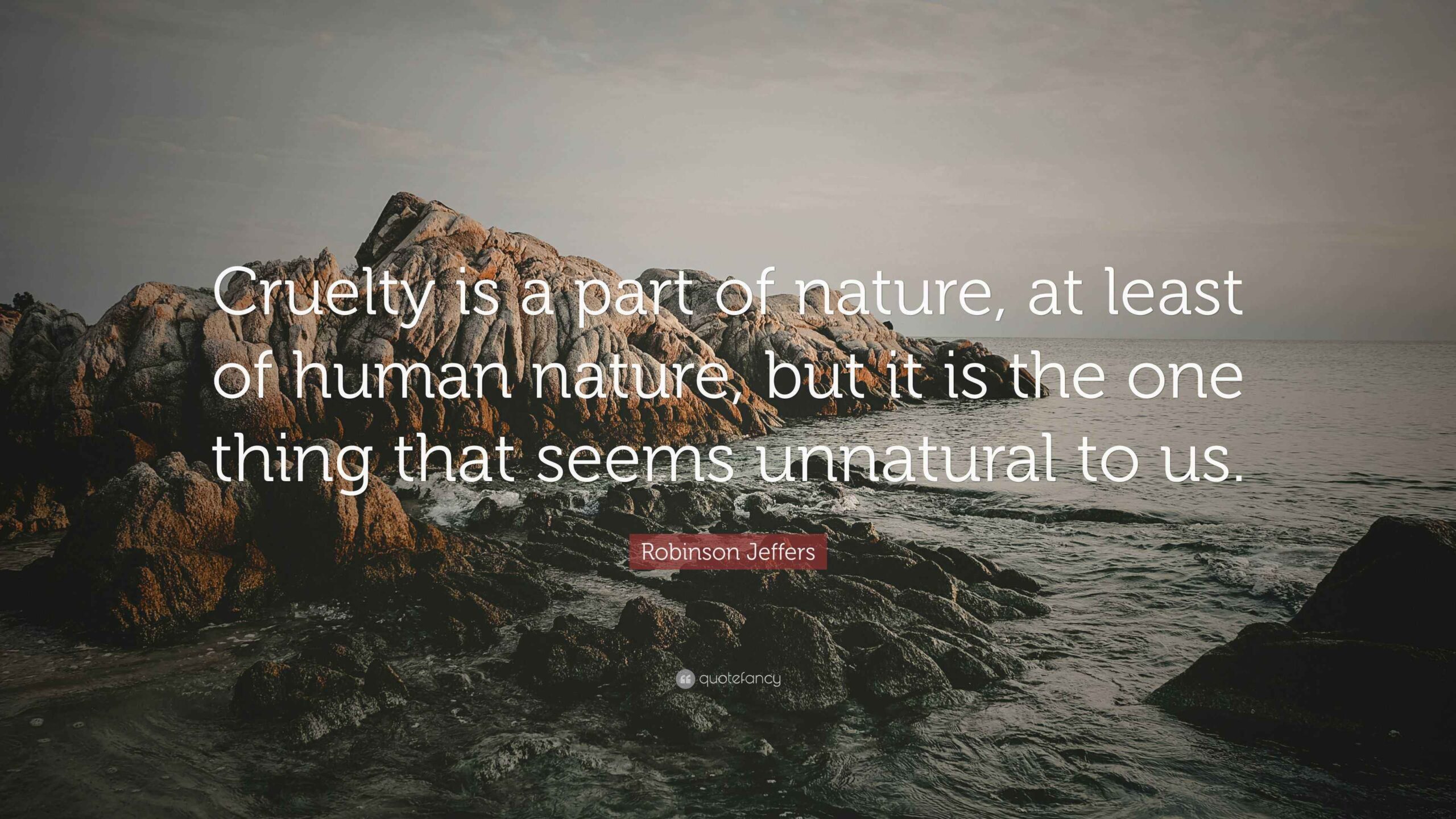Human cruelty—an unsettling yet pervasive trait woven into the fabric of our existence—provokes a profound inquiry into the darkest aspects of human nature. It manifests in a myriad of forms, from interpersonal violence to systemic oppression, leaving an indelible imprint on individuals and societies alike. This article endeavors to dissect the nuances of human cruelty, tracing its origins, examining its manifestations, and contemplating its implications for animals and humanity as a whole.
To comprehend the essence of human cruelty, one must first grapple with its definition. Cruelty can be characterized as the deliberate infliction of suffering or pain on others, often devoid of empathy or concern for their well-being. This phenomenon is not confined to the malevolent acts of a few; it permeates everyday interactions and institutional frameworks, often disguised under the guise of tradition, authority, or apathy. At its core, human cruelty raises critical questions about morality, ethics, and the overarching responsibility that accompanies our sentience.
Historical perspectives provide valuable insights into the evolution of human cruelty. Throughout the annals of time, societies have witnessed brutal spectacles—wars, slaveries, colonial oppressions—that highlight humanity’s capacity for malevolence. Cultures often romanticize tales of conquest and valor while glossing over the inhumane atrocities committed against subjugated populations. This selective memory reinforces a dangerous narrative: an implicit acceptance of cruelty as an inevitability within the human condition.
The psychological underpinnings of cruelty warrant further exploration. It is beneficial to delve into the mindsets that facilitate such behavior. Theories in psychology frequently cite desensitization as a key element; repeated exposure to violence erodes the emotional responses that once governed our sense of compassion. The infamous Milgram experiments revealed that ordinary individuals could enact extreme cruelty when subjected to authoritative command, underscoring the tenuous boundaries of moral agency. Such findings provoke a haunting reality: within each of us lies the potential for harm, often waiting for the right nexus of circumstance and authority to unshackle it.
Turning our gaze towards contemporary instances of cruelty, one is confronted with the rich tapestry of animal suffering intertwined with human cruelty. In numerous industries, animals are relegated to mere commodities, subjected to horrific conditions that are often deemed acceptable in the name of progress and profit. Factory farming exemplifies this phenomenon, as it capitalizes on the commodification of sentient beings, who are denied the most basic expressions of freedom and dignity. Understanding the shared plight of human and non-human animals elucidates a universal moral imperative: the need for compassion extends beyond species boundaries.
Cruelty also rears its head in the digital realm, where the anonymity of online interactions emboldens individuals to engage in vitriolic behavior. Cyberbullying has emerged as a virulent form of cruelty, exacerbating the mental health crises facing individuals, particularly adolescents. This phenomenon elucidates the intricacies of modern aggression, where the barriers that once governed face-to-face interactions have faded, revealing a cavalier attitude towards the emotional toll inflicted upon others.
Moreover, the cruelty embedded in systemic structures, such as socio-economic inequality and institutional racism, unveils another layer of human malevolence. These systemic forms of oppression perpetuate cycles of violence and disenfranchisement, ensnaring entire communities in a web of marginalization. The compounding effects of such cruelty not only devastate lives but also decimate the fabric of society, engendering resentment and division.
The unrelenting presence of cruelty compels critical discourse on morality. What does it mean to be human in a world rife with such suffering? Reexamination of societal values could foster a paradigm shift, encouraging the elevation of empathy and accountability against the tide of cruelty that threatens to drown it. Philosophers across generations have grappled with the implications of morality, contending with the balance between self-interest and altruism. Within these debates lies the potential to reimagine human conduct, positioning virtues as antidotes to the pervasive cruelty that devastates both individual lives and collective humanity.
Education emerges as a formidable tool in combating cruelty. By promoting compassion in early developmental stages, society can cultivate a new generation that fundamentally resists cruelty in all its forms. Integrating empathy-driven curricula that encompass both human and animal welfare can foster a culture that prizes kindness and accountability. The ripple effect of such a shift in perspectives can pave the way for transformative change in societal attitudes towards cruelty.
The fight against cruelty is not merely a quest for justice; it is a profound exploration of our inherent capability for kindness. By understanding the origins and manifestations of cruelty, we can dismantle the barriers that perpetuate it. Recognizing the interplay between human and animal suffering invites us to stand in solidarity across both fronts, challenging the prevailing narratives that justify cruelty as a byproduct of nature. Ultimately, the embrace of empathy and compassion can lead not only to the alleviation of suffering but also to the redefinition of what it means to be human.
In conclusion, human cruelty manifests in various forms, permeating our personal lives, societal structures, and interactions with non-human animals. By analyzing its roots and implications, one can begin to foster a deeper understanding of the moral responsibility borne by each individual. As we navigate the complexities of our existence, let us strive to confront the darkest aspects of our nature and emerge into a reality rich in empathy, compassion, and justice.








